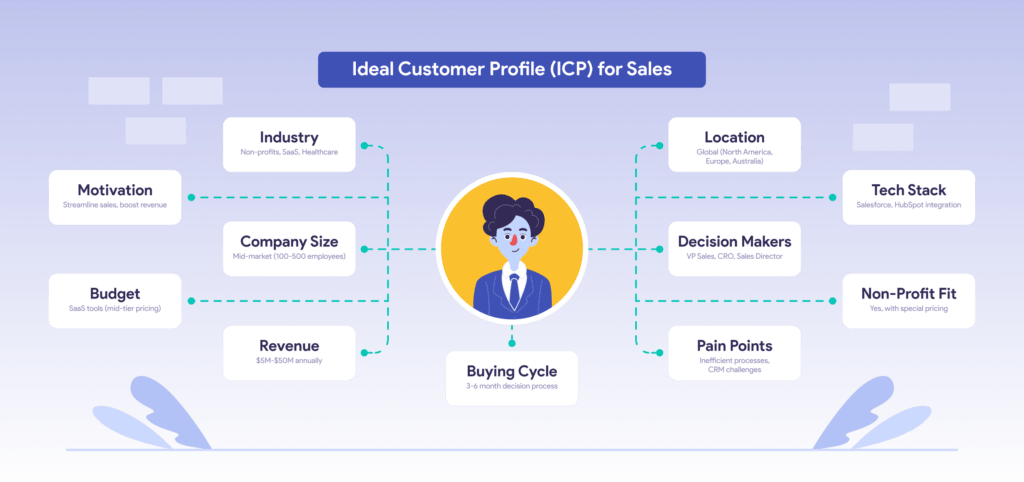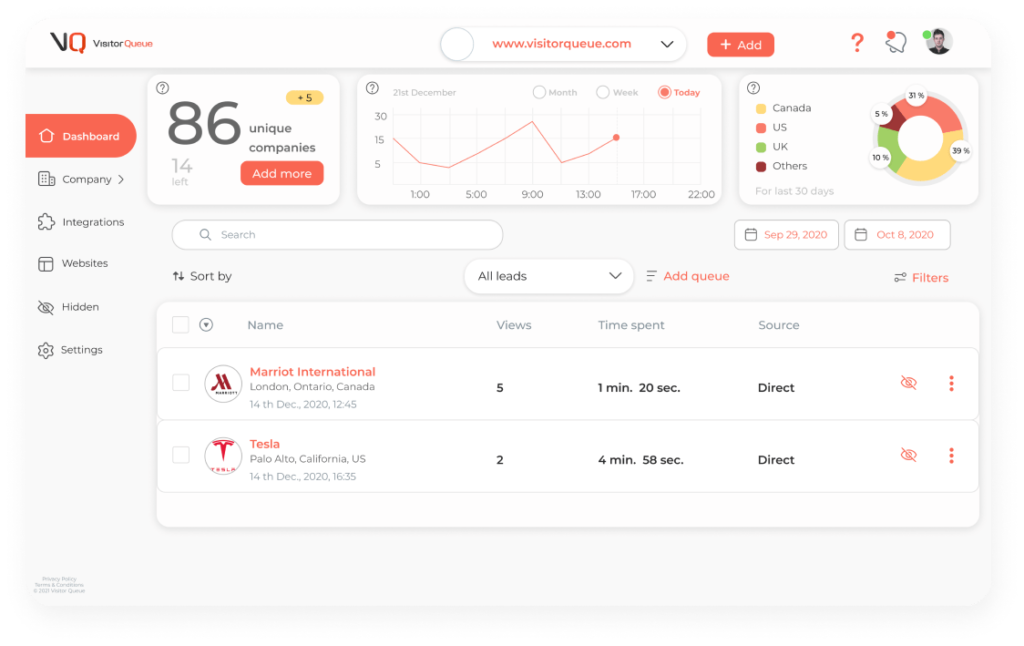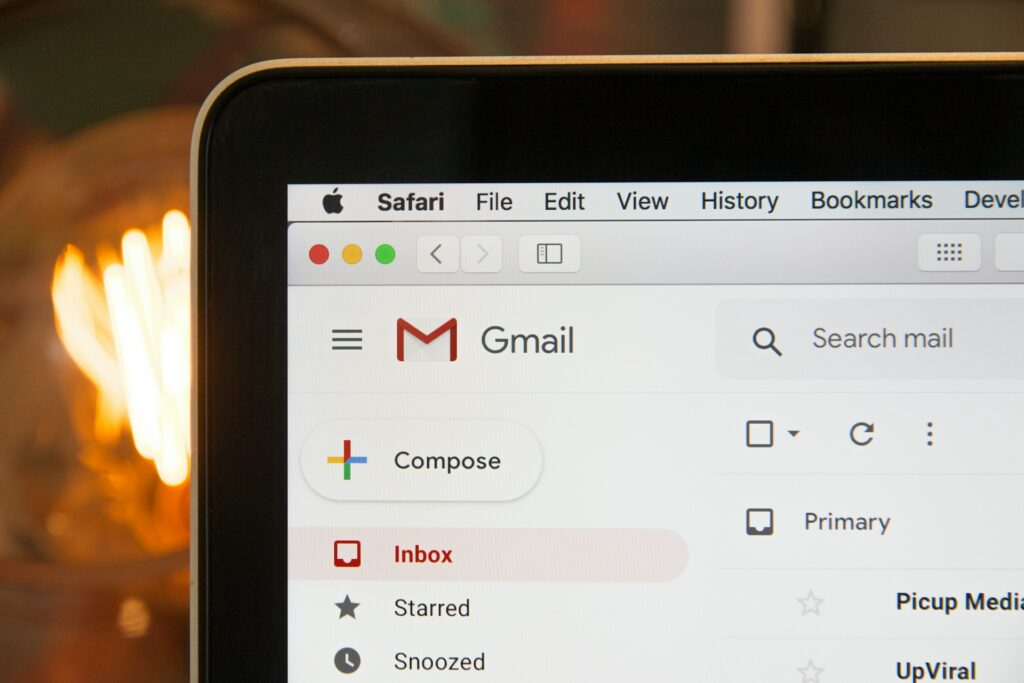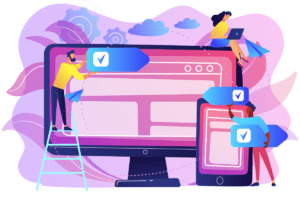Every business needs customers. But, before a customer signs a deal, makes a purchase, or books a demo, there’s an important first step: becoming a sales lead. That step is often where businesses either gain momentum or hit a wall. Finding quality B2B sales leads is a process of knowing where to look, who to look for, and how to start the conversation. Whether you’re a seasoned salesperson or building your pipeline for the first time, this guide will walk you through how to consistently find leads that are worth your time. Let’s define what qualifies a lead as a sales lead.
Well, What is a Sales Lead?
A sales lead is any individual or company that might be interested in your product or service. Some people lump leads and prospects into the same category, but there’s a difference. A lead is someone who has shown some level of interest or matches the profile of someone who should be interested. A prospect, on the other hand, is a qualified lead, or someone you’ve already learned more about and started engaging with. The challenge here isn’t just getting names. It’s about finding the right people at the right companies, who have the right problem you can solve. That’s where strategy and consistency come into play.
Know Who You’re Looking For
Before you go searching for leads, you need to define your ideal customer profile. If you skip this step, you’ll waste time chasing companies that were never a good fit to begin with. Think beyond basic demographics like industry and company size. Ask deeper questions: What problems does your solution fix? What roles typically feel that pain? What kind of budget or internal process would make someone a serious contender? The more detailed you make your target profile, the easier it is to know where to spend your time. Go through your CRM to try to find similarities among your top clients. This will help your team figure out where to get started.

Start with Low-Hanging Fruit
Sometimes, the best place to look is in your own backyard. Look at your current customer base. Are there other departments at those companies who could benefit from your services? Have you asked for referrals from clients who already trust you? What about past customers or leads who went cold a few months back but might now be in a better place to re-engage? Revisiting old conversations or upselling into existing accounts often takes less effort than opening completely new doors. Don’t underestimate the value of nurturing relationships you’ve already started.
Website Visitor Identification
People who land on your pricing page, blog, or contact form are showing interest. But what happens if they don’t fill out a form or make a purchase? That’s where a tool like Visitor Queue comes in. Visitor Queue helps you identify which companies are visiting your site, how often, and what pages they’re viewing. Additionally, we provide employee contact information to help you reach out. With that kind of insight, you can follow up with companies that are already curious about what you offer. It’s not a cold call when they already know what your company has to offer.

Use LinkedIn Strategically
Start by searching for people based on job title, company size, or location. Look at who’s engaging with content related to your industry. Follow people in your target market and comment meaningfully on their posts. Build visibility before jumping into their inbox. When you do reach out, don’t copy and paste a sales pitch. Instead, start a real conversation. Mention something you noticed about their business. Ask a question that relates to their role. Make it clear you’ve done your homework and that you’re not just mass messaging everyone with a job title.
Attend Events
Conferences, webinars, trade shows, and networking events are all great ways to meet potential leads. Even if you’re not speaking on stage or hosting a booth, showing up and making connections can lead to meaningful conversations. And not every event has to be industry-specific. Local business events, university alumni meetups, or even casual mixers can be a chance to talk about what you do in a way that feels natural. Don’t make it all about business. People can sense when you’re just waiting for your turn to pitch. Ask about what others are working on. Share stories. Build relationships that can lead to future opportunities, even if they don’t close right away.
Leverage Your CRM
Most companies have a CRM software full of contact information. But, it’s only valuable if it’s used well. Take time to go through your CRM and identify leads that were never fully qualified, contacts who haven’t been touched in months, or notes that point to potential cross-sell opportunities. At the same time, clean out the clutter. Remove outdated contacts or dead-end accounts. A well-maintained CRM doesn’t just make it easier to find leads; it gives you a clearer view of your pipeline and where to focus next.
Pay Attention to Buying Signals
Sometimes the best sales leads are hiding in plain sight. People drop clues all the time that they’re in the market for a new solution. A company that just secured funding might be ready to invest in infrastructure. A job posting for a role your product supports could mean they’re facing new challenges. A social media post about a business expansion might signal an upcoming need.
Warm Up Cold Outreach
Cold emails and calls can still work. But, only when they’re thoughtful. If you want someone to read what you send, you need to lead with relevance. Mention a recent announcement, an industry challenge, or a pain point they’re likely feeling. Show them that your message wasn’t sent to 200 people in the same batch. The more tailored your message, the more likely it is to lead to a real conversation. And remember, your goal isn’t to close the deal in the first email, it’s to earn a reply and open the door.

Build Partnerships
Sometimes the best way to get in front of your ideal customer is through someone they already trust. Strategic partnerships can be a powerful source of lead generation. If your product complements another service, consider building a referral relationship. For example, a marketing agency might partner with a CRM provider to refer clients back and forth. These relationships take time to build, but they can pay off long-term. Make sure it’s a two-way street, with clear expectations about how leads are shared and supported.
Content
You don’t have to be a writer to create content that attracts leads. Blogs, webinars, case studies, and guides can all serve as lead magnets if they speak to a problem your audience wants to solve. When someone downloads a guide or registers for a webinar, they’re raising their hand. That’s a signal you can follow up on with a personal touch. Content also builds authority. It gives your sales team something to share in outreach that isn’t just a pitch. And when optimized for search engines, it can help potential leads find you before you even reach out.
Stay Consistent with Follow Ups
One of the biggest mistakes in lead generation isn’t not finding leads. it’s not following up. People are busy. Just because someone didn’t respond to your first email doesn’t mean they’re not interested. Sometimes it takes a second, third, or even fourth message to get a reply. The key is to follow up without being annoying. Space out your messages. Change your approach. Provide value in every interaction. And when someone does say “not now,” make a note to circle back later.
Team Work
Lead generation shouldn’t fall on just one person or one team. Your sales and marketing departments should be working closely together, aligning their strategies and sharing insights. Marketing can tee up opportunities through inbound campaigns, while sales can provide real-time feedback on what messages are resonating. Even customer service teams can play a role by identifying upsell opportunities or hearing when customers mention new pain points. The more aligned your teams are, the more cohesive and effective your lead generation will be.

Track What’s Working, And What’s Not
You can’t improve what you don’t measure. Keep track of where your best leads are coming from. Are they finding you through your website? From referrals? Through cold outreach? Once you know which channels are delivering the highest-quality leads, you can double down on those efforts. On the flip side, if something isn’t working, don’t be afraid to pivot. Maybe that webinar didn’t generate the turnout you hoped for. Or maybe a cold outreach campaign flopped. That’s all part of the process. Testing and adjusting are what keep your pipeline moving forward.
What’s Next?
It’s easy to get caught up in the numbers. More leads, more calls, more emails. But the truth is, quality beats quantity every time. You don’t need hundreds of lukewarm leads. You need a steady stream of the right people, those with a genuine need, real buying power, and a timeline that matches your sales cycle. It can take some trial and error to figure out what your prospects respond the best to, so ensure that you are leveraging your CRM to track the success of your sales strategies. As always, if you have any questions about using Visitor Queue to generate leads, do not hesitate to reach out.
 Identify
Identify Personalize
Personalize Benchmark
Benchmark Agencies
Agencies Integrations
Integrations Case Studies
Case Studies Use Cases
Use Cases Blog
Blog Resources
Resources









